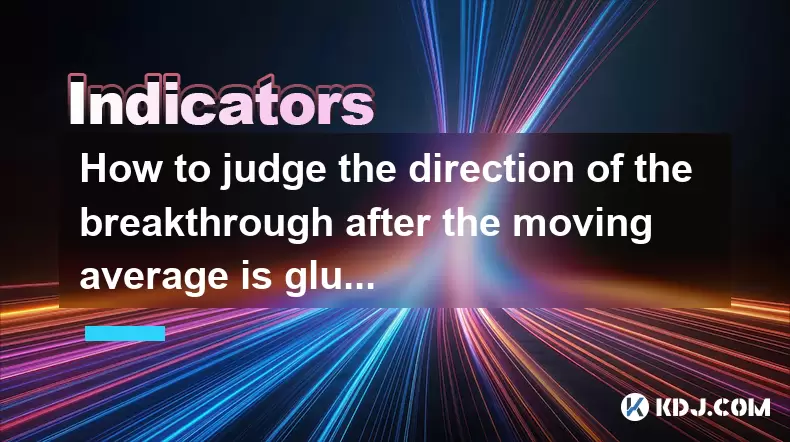-
 Bitcoin
Bitcoin $119000
-2.21% -
 Ethereum
Ethereum $4315
1.01% -
 XRP
XRP $3.151
-3.11% -
 Tether USDt
Tether USDt $0.0000
0.00% -
 BNB
BNB $808.5
-0.71% -
 Solana
Solana $175.8
-4.21% -
 USDC
USDC $0.9999
0.00% -
 Dogecoin
Dogecoin $0.2250
-3.92% -
 TRON
TRON $0.3469
1.77% -
 Cardano
Cardano $0.7818
-3.81% -
 Chainlink
Chainlink $21.47
-2.10% -
 Hyperliquid
Hyperliquid $43.30
-6.81% -
 Stellar
Stellar $0.4370
-2.84% -
 Sui
Sui $3.682
-4.40% -
 Bitcoin Cash
Bitcoin Cash $590.8
2.67% -
 Hedera
Hedera $0.2484
-5.20% -
 Ethena USDe
Ethena USDe $1.001
0.00% -
 Avalanche
Avalanche $23.10
-4.29% -
 Litecoin
Litecoin $119.2
-3.96% -
 Toncoin
Toncoin $3.409
0.90% -
 UNUS SED LEO
UNUS SED LEO $9.016
-1.29% -
 Shiba Inu
Shiba Inu $0.00001304
-3.82% -
 Uniswap
Uniswap $11.18
1.33% -
 Polkadot
Polkadot $3.913
-3.51% -
 Cronos
Cronos $0.1672
-3.08% -
 Dai
Dai $1.000
0.02% -
 Ethena
Ethena $0.7899
-4.70% -
 Bitget Token
Bitget Token $4.400
-1.23% -
 Pepe
Pepe $0.00001132
-5.93% -
 Monero
Monero $257.9
-6.44%
How to judge the direction of the breakthrough after the moving average is glued together?
When moving averages glue together, use volume, momentum indicators, price action, and trend lines to predict the direction of the breakthrough in the crypto market.
May 29, 2025 at 11:56 am

When analyzing the cryptocurrency market, one of the key technical analysis tools traders use is the moving average. When moving averages "glue" together, it often indicates a period of consolidation or indecision in the market. Understanding how to judge the direction of the breakthrough after such a period is crucial for making informed trading decisions. This article will explore various methods to help you determine the direction of the breakthrough after moving averages have glued together.
Understanding Moving Averages and Their "Gluing" Together
Moving averages are calculated by taking the average price of a cryptocurrency over a specific period. Common types include the Simple Moving Average (SMA) and the Exponential Moving Average (EMA). When different moving averages converge or "glue" together, it means that the short-term and long-term trends are aligning, often signaling a potential upcoming significant price movement.
The key to understanding this phenomenon is recognizing that when moving averages glue together, the market is in a state of equilibrium. This equilibrium can break in either direction, making it essential to analyze other indicators and market conditions to predict the breakout direction.
Analyzing Volume for Breakthrough Direction
Volume is a critical indicator that can help determine the direction of a breakthrough after moving averages have glued together. An increase in volume often precedes a significant price movement. When the volume spikes as the moving averages start to diverge, it can be a strong indication of the direction in which the price will move.
- If the volume increases as the price breaks above the glued moving averages, it suggests bullish sentiment and a potential upward breakthrough.
- If the volume increases as the price breaks below the glued moving averages, it suggests bearish sentiment and a potential downward breakthrough.
Monitoring volume alongside moving averages provides a more comprehensive view of market dynamics and can enhance your ability to predict the direction of the breakthrough.
Using Momentum Indicators
Momentum indicators, such as the Relative Strength Index (RSI) and the Moving Average Convergence Divergence (MACD), can offer additional insights into the direction of a breakthrough. These indicators measure the speed and change of price movements, which can help confirm the direction of a potential breakout.
- If the RSI is trending upwards and moving out of the oversold territory as the moving averages start to separate, it can signal an upcoming bullish breakthrough.
- If the MACD line crosses above the signal line as the moving averages diverge, it can also indicate a bullish breakout.
- Conversely, if the RSI is trending downwards and moving out of the overbought territory, it may signal a bearish breakthrough.
- If the MACD line crosses below the signal line, it can indicate a bearish breakout.
Incorporating momentum indicators into your analysis can provide a more robust prediction of the breakthrough direction after the moving averages have glued together.
Observing Price Action and Support/Resistance Levels
Price action and the identification of key support and resistance levels are fundamental aspects of technical analysis. Observing how the price interacts with these levels as the moving averages start to diverge can offer valuable clues about the direction of the breakthrough.
- If the price breaks above a significant resistance level as the moving averages separate, it suggests a bullish breakthrough.
- If the price breaks below a significant support level, it suggests a bearish breakthrough.
Additionally, pay attention to candlestick patterns such as bullish engulfing or bearish engulfing patterns that form near the glued moving averages. These patterns can provide further confirmation of the potential direction of the breakthrough.
Utilizing Trend Lines and Channels
Trend lines and channels are another useful tool for predicting the direction of a breakthrough. Drawing trend lines that connect the highs and lows of the price action around the glued moving averages can help identify the overall trend and potential breakout points.
- If the price breaks above an ascending trend line or channel, it can indicate a bullish breakthrough.
- If the price breaks below a descending trend line or channel, it can indicate a bearish breakthrough.
Channels can also help you gauge the strength of the breakout. A strong breakout will often move decisively away from the channel, while a weak breakout may quickly return within the channel boundaries.
Combining Multiple Indicators for Confirmation
No single indicator should be relied upon exclusively. Combining multiple indicators can provide a more reliable prediction of the breakthrough direction after the moving averages have glued together. Here’s how you can integrate the methods discussed:
- Start by observing the volume as the moving averages begin to diverge. A significant increase in volume can confirm the strength of the breakout.
- Next, check momentum indicators like the RSI and MACD for additional confirmation of the breakout direction.
- Then, analyze price action and the interaction with key support and resistance levels to further validate the potential breakout.
- Finally, use trend lines and channels to assess the overall trend and the strength of the breakout.
By integrating these various methods, you can enhance your ability to accurately predict the direction of the breakthrough after the moving averages have glued together.
Frequently Asked Questions
Q1: Can moving averages alone predict the direction of a breakthrough?
A1: Moving averages alone cannot predict the direction of a breakthrough with high accuracy. They are best used in conjunction with other indicators such as volume, momentum indicators, and price action analysis to provide a more comprehensive view of potential market movements.
Q2: How long should I wait after the moving averages have glued together before making a decision?
A2: The duration you should wait after moving averages have glued together can vary. It’s important to monitor other indicators and market conditions. Typically, waiting for a clear divergence in the moving averages and confirmation from other indicators can help you make a more informed decision.
Q3: Are there any specific timeframes that are more effective for analyzing glued moving averages?
A3: The effectiveness of analyzing glued moving averages can vary depending on the timeframe. Shorter timeframes like 5-minute or 15-minute charts can be useful for day trading, while longer timeframes like daily or weekly charts are better suited for swing trading or long-term investing. It’s essential to align the timeframe with your trading strategy.
Q4: Can glued moving averages be used in all market conditions?
A4: Glued moving averages can be used in various market conditions, but their effectiveness may vary. In highly volatile markets, other indicators might be more reliable. In more stable markets, glued moving averages can be a valuable tool for predicting breakouts when combined with other analysis methods.
Disclaimer:info@kdj.com
The information provided is not trading advice. kdj.com does not assume any responsibility for any investments made based on the information provided in this article. Cryptocurrencies are highly volatile and it is highly recommended that you invest with caution after thorough research!
If you believe that the content used on this website infringes your copyright, please contact us immediately (info@kdj.com) and we will delete it promptly.
- Circle Stock, Blockchain, and Strong Earnings: A Bullish Outlook
- 2025-08-12 22:30:12
- Nexchain, Crypto Presale, and Rankings: What's the Buzz?
- 2025-08-12 22:30:12
- Arc Blockchain: Circle's Layer-1 Play Amidst $428 Million Loss
- 2025-08-12 20:30:13
- XRP Price: Riding the Bull Cycle Wave or Hitting a Wall?
- 2025-08-12 20:50:12
- Cloud Mining in 2025: Chasing Passive Income and High Returns
- 2025-08-12 20:30:13
- XRP Price Forecast: Can XRP Hit $8, $12.60, or Even $100? Surge Drivers Analyzed
- 2025-08-12 21:10:13
Related knowledge

What does it mean when the +DI and -DI cross frequently in the DMI indicator but the ADX is flattening?
Aug 11,2025 at 03:15am
Understanding the DMI Indicator ComponentsThe Directional Movement Index (DMI) is a technical analysis tool composed of three lines: the +DI (Positive...

What does it mean when the moving average, MACD, and RSI all send buy signals simultaneously?
Aug 11,2025 at 01:42pm
Understanding the Convergence of Technical IndicatorsWhen the moving average, MACD, and RSI all generate buy signals at the same time, traders interpr...

What does it mean when the price is trading above the SAR indicator but the red dots are densely packed?
Aug 09,2025 at 11:49pm
Understanding the SAR Indicator and Its Visual SignalsThe SAR (Parabolic Stop and Reverse) indicator is a technical analysis tool used primarily to de...

What does it mean when the candlestick chart forms a "Morning Star" but trading volume is sluggish?
Aug 12,2025 at 06:28pm
Understanding the Morning Star Candlestick PatternThe Morning Star is a three-candle bullish reversal pattern commonly observed in cryptocurrency pric...

What does it mean when the RSI indicator moves sideways for an extended period between 40 and 60?
Aug 10,2025 at 08:08am
Understanding the RSI Indicator in Cryptocurrency TradingThe Relative Strength Index (RSI) is a momentum oscillator widely used in cryptocurrency trad...

What does it mean when the MACD histogram continues to shorten but the price reaches a new high?
Aug 09,2025 at 09:29pm
Understanding the MACD Histogram and Its ComponentsThe MACD (Moving Average Convergence Divergence) indicator is a widely used technical analysis tool...

What does it mean when the +DI and -DI cross frequently in the DMI indicator but the ADX is flattening?
Aug 11,2025 at 03:15am
Understanding the DMI Indicator ComponentsThe Directional Movement Index (DMI) is a technical analysis tool composed of three lines: the +DI (Positive...

What does it mean when the moving average, MACD, and RSI all send buy signals simultaneously?
Aug 11,2025 at 01:42pm
Understanding the Convergence of Technical IndicatorsWhen the moving average, MACD, and RSI all generate buy signals at the same time, traders interpr...

What does it mean when the price is trading above the SAR indicator but the red dots are densely packed?
Aug 09,2025 at 11:49pm
Understanding the SAR Indicator and Its Visual SignalsThe SAR (Parabolic Stop and Reverse) indicator is a technical analysis tool used primarily to de...

What does it mean when the candlestick chart forms a "Morning Star" but trading volume is sluggish?
Aug 12,2025 at 06:28pm
Understanding the Morning Star Candlestick PatternThe Morning Star is a three-candle bullish reversal pattern commonly observed in cryptocurrency pric...

What does it mean when the RSI indicator moves sideways for an extended period between 40 and 60?
Aug 10,2025 at 08:08am
Understanding the RSI Indicator in Cryptocurrency TradingThe Relative Strength Index (RSI) is a momentum oscillator widely used in cryptocurrency trad...

What does it mean when the MACD histogram continues to shorten but the price reaches a new high?
Aug 09,2025 at 09:29pm
Understanding the MACD Histogram and Its ComponentsThe MACD (Moving Average Convergence Divergence) indicator is a widely used technical analysis tool...
See all articles

























































































